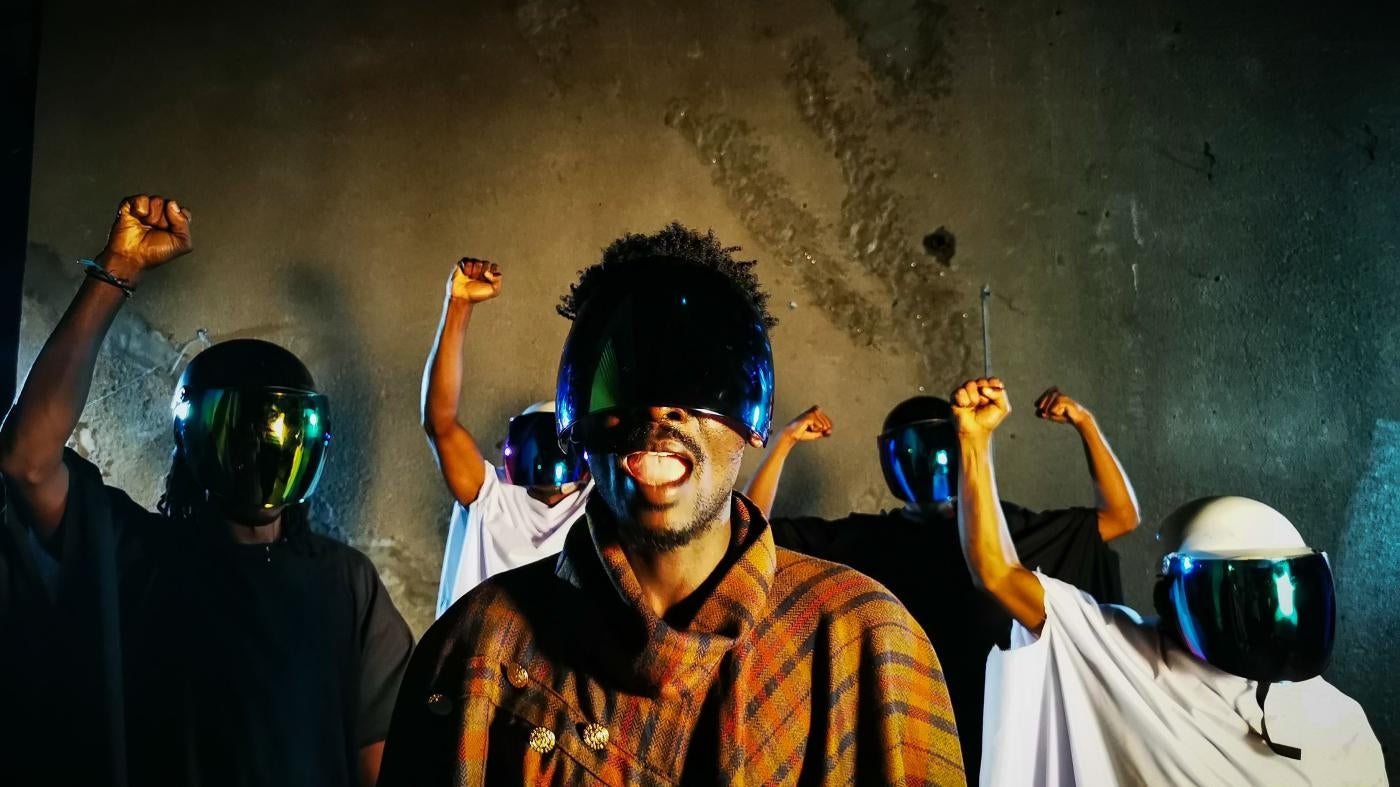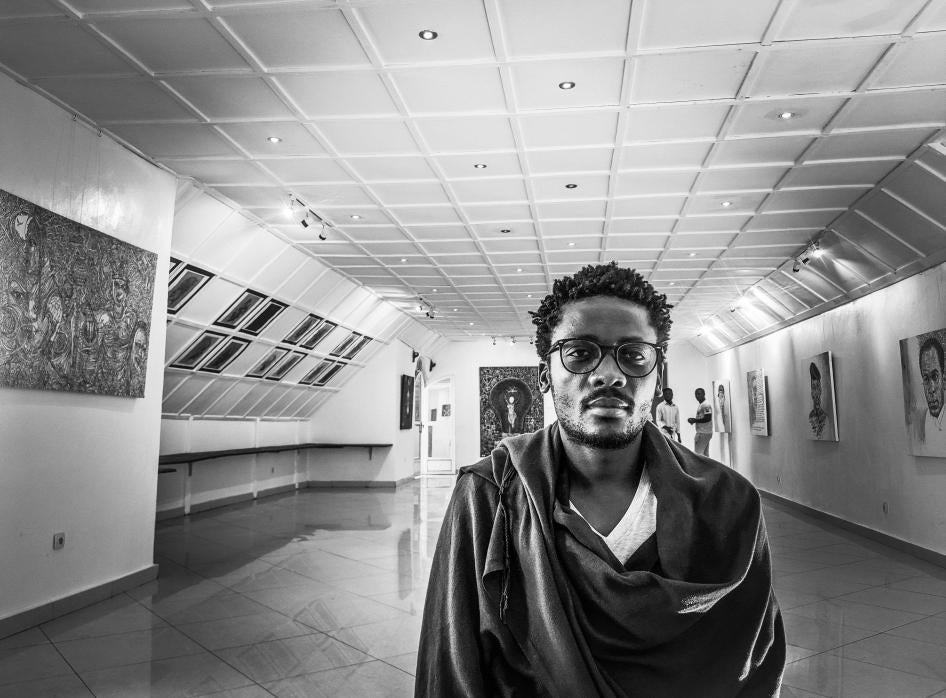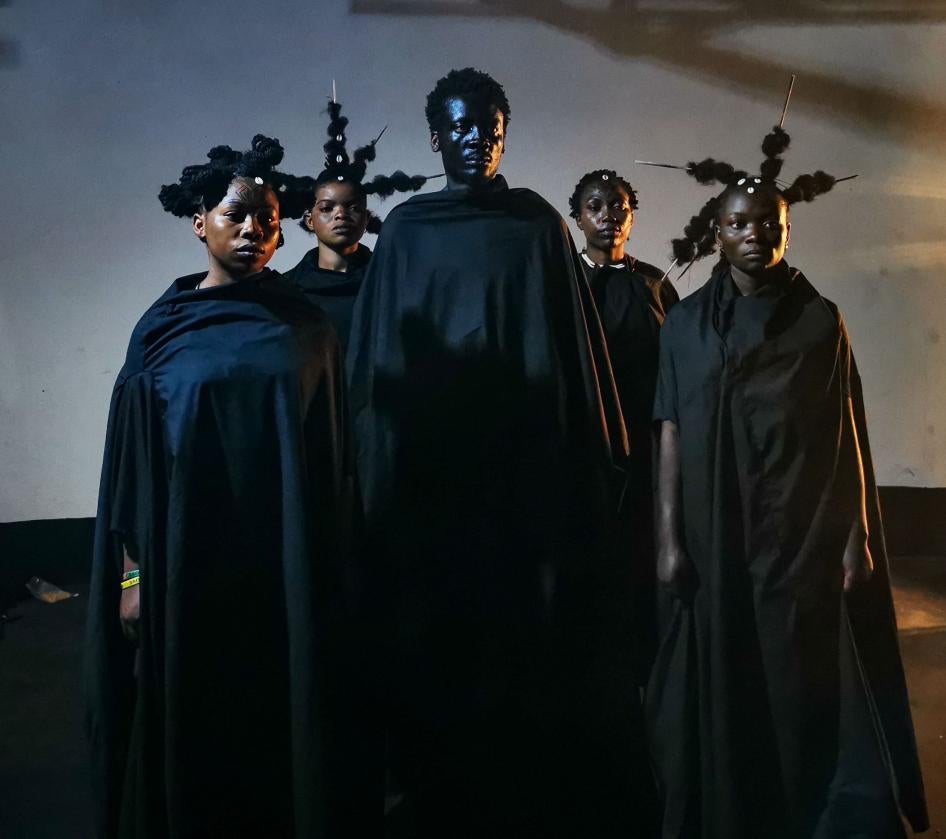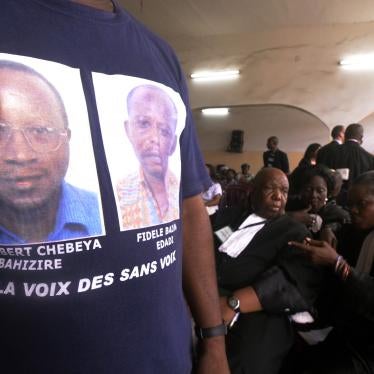You are known as a slam poet. What exactly is slam?
Slam poetry is a movement that aims to get poetry out of books and onto the public stage. This trend was invented in the United States in the 1980s by Marc Smith, as a means to overcome the lack of interaction between the poet and the public. But slam has evolved with time. Today, in my view, slam is an art form which aims at raising consciousness, getting messages across, and standing in for causes: peace, justice, access to education and to basic services. It’s also an art form that conveys hope for a better future.
Why did you choose slam as a means of expressing yourself?
Congo is known for its dancing and party music, but I turned to slam as it’s an art form that conveys messages. I am convinced that poetry is a great way to reach the heart of the people, to make people listen to each other. It’s also an art form that challenges.
After discovering slam in 2013, some friends and I put together the Goma Slam Session collective. It became an alternate means of education, a way to promote critical thought. Our Slam at School program offers writing, theater, and art workshops. It allows youth to free themselves, to express themselves, and to develop points of view that are different from what they learn at school.
Through slam, we see young people getting more and more involved, writing and expressing themselves. Eight women and girls have participated in our program called Slam au féminin (Feminine Slam). They write, they talk about their situation, and they become role models in society. Today, they host workshops with other girls, including survivors of sexual violence and victims of social discrimination, to help them develop a sense of freedom and self-confidence. We want to continue to encourage this enthusiasm for art as a tool for community engagement, a tool for awakening consciousness.
What is your last slam, Bosembo, about?
Bosembo – « justice » in lingala – is a slam that relates to my own life, to my own journey, the journey of a young man from the 1990s generation. It’s the product of my frustration, of my rebellion, about all these years of war we have lived through and continue to live through here in the Kivus.
From 1990 to today, millions of Congolese have been killed. Bosembo talks about all the crimes that were committed here. It’s my way of advocating for transitional justice in Congo as a way to find peace. Because impunity only reinforces the cycle of violence.
The United Nations’ Mapping Report, released in 2010, documents in detail the crimes that were committed in Congo from 1993 to 2003. But up to now, it has been difficult for us to have closure, because none of the executioners have ever been held accountable. The same people who killed people in the 1990s continue to fan the flames of conflict. And we, the Congolese people, have had enough.
I am convinced that peace can only come through justice, through reconciliation, and reparations for damages. To achieve this, we need transitional justice.
Why use a piano and a flute in a song that talks about war and crimes against humanity?
Beyond the crimes, there’s a ray of hope. I wanted to convey the kind of gentleness we must cultivate. The idea was to create a cocktail of all these feelings of revolt and frustration, of love, of life, and the hope for lasting peace, which we mustn’t lose. This utopia of a lasting peace in Congo must be kept alive. We create art to keep it alive and to dream on.
What story does the video clip of Bosembo tell?
The clip was made in collaboration with Justin Kasereka, a visual artist from Goma, and Bianco Matrix, a dancer who choreographed it. We wanted to put the emphasis on the victims. There are millions of them. As long as there is no peace in eastern Congo, the souls of all our loved ones who have died will continue to suffer. This clip keeps these fallen souls in motion, they are wrapped in shrouds, but they are not at peace, they are still moving. We wanted to show how these victims are demanding justice, so that, at long last, their souls can rest in peace.
Who do you hope to touch with Bosembo?
Bosembo wants to raise awareness and tell the Congolese population that we must unite, and that we must be more creative in our demand for justice and accountability in Congo. We are the ones who are suffering, and we must be the ones who construct the peace we want.
But Bosembo also aims at reaching out to the world at large. Millions have died. They have all been reduced to numbers. However, behind every life cut short, there is a story. There is a love story, there are shattered dreams, there are missed responsibilities, there are hearts that have been broken. This has to end. Bosembo is an appeal to the world to direct its attention to what is happening in Congo.
Do you think art is a powerful tool for change?
I am in favor of non-violence, of “healing wounds with words.” To me, art is an essential tool to spur people into nonviolent action. Art in itself, for me, is a weapon; a weapon that enables us to face our fear of the other, our hatred, and that brings communities together to denounce what is wrong. It’s also a weapon to combat injustice. And it’s also a weapon that keeps me alive and that keeps me going.
*This interview has been edited and condensed.





